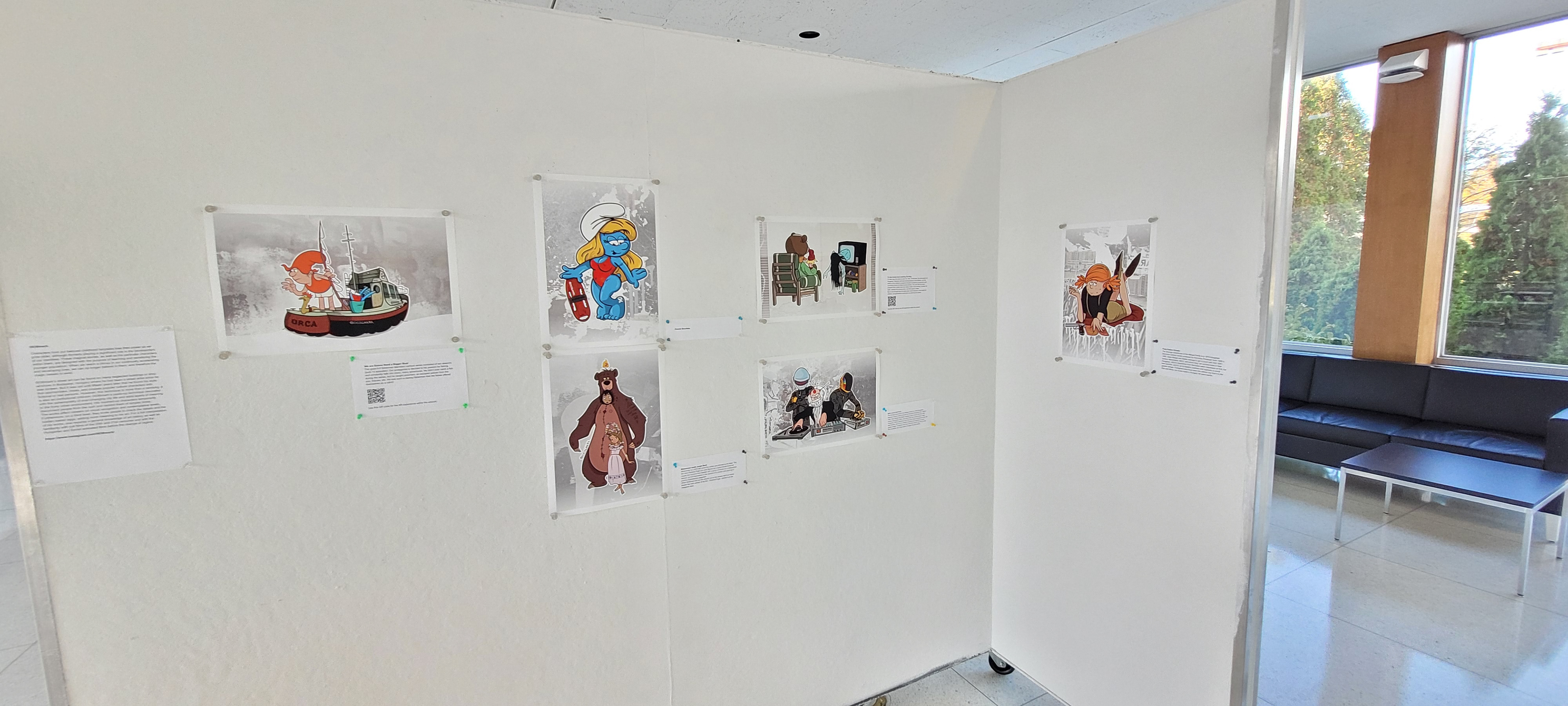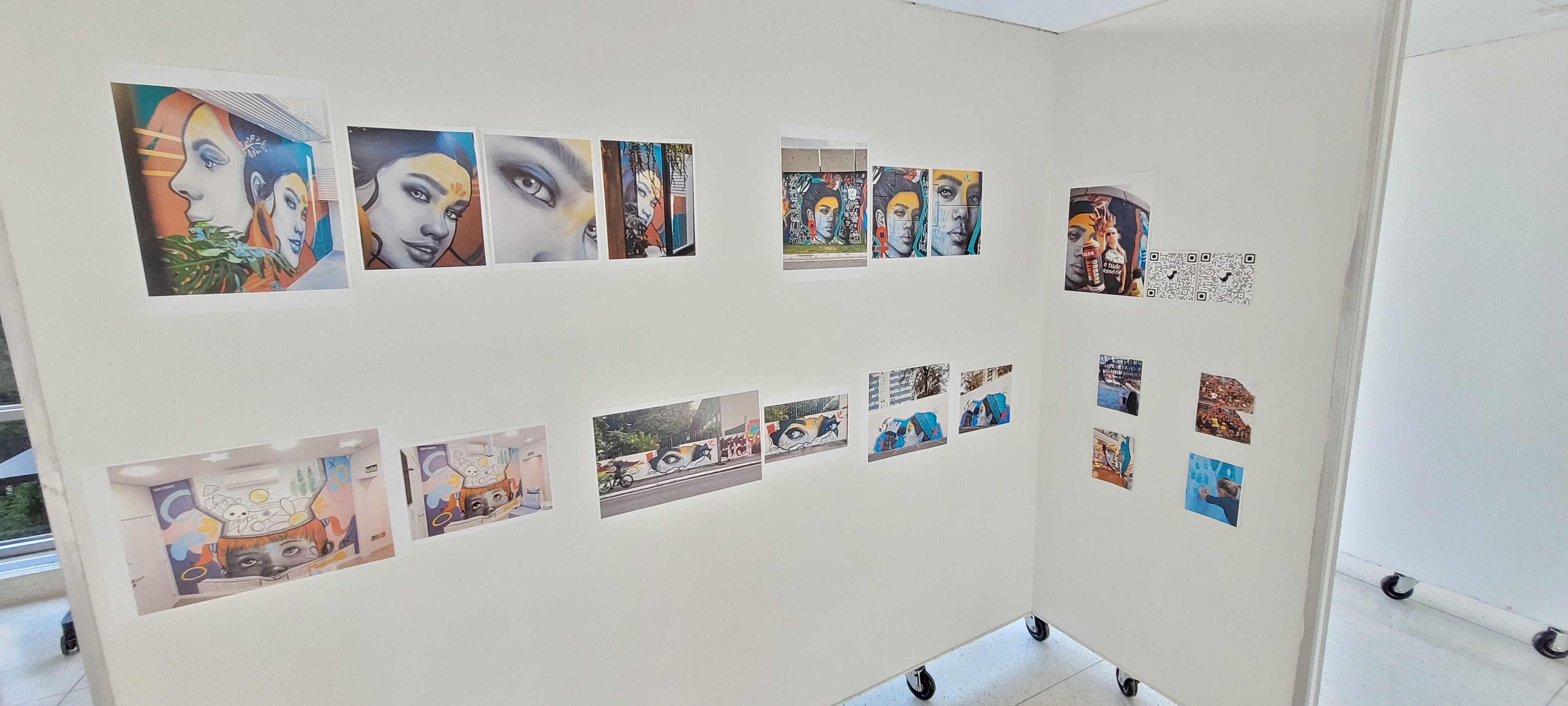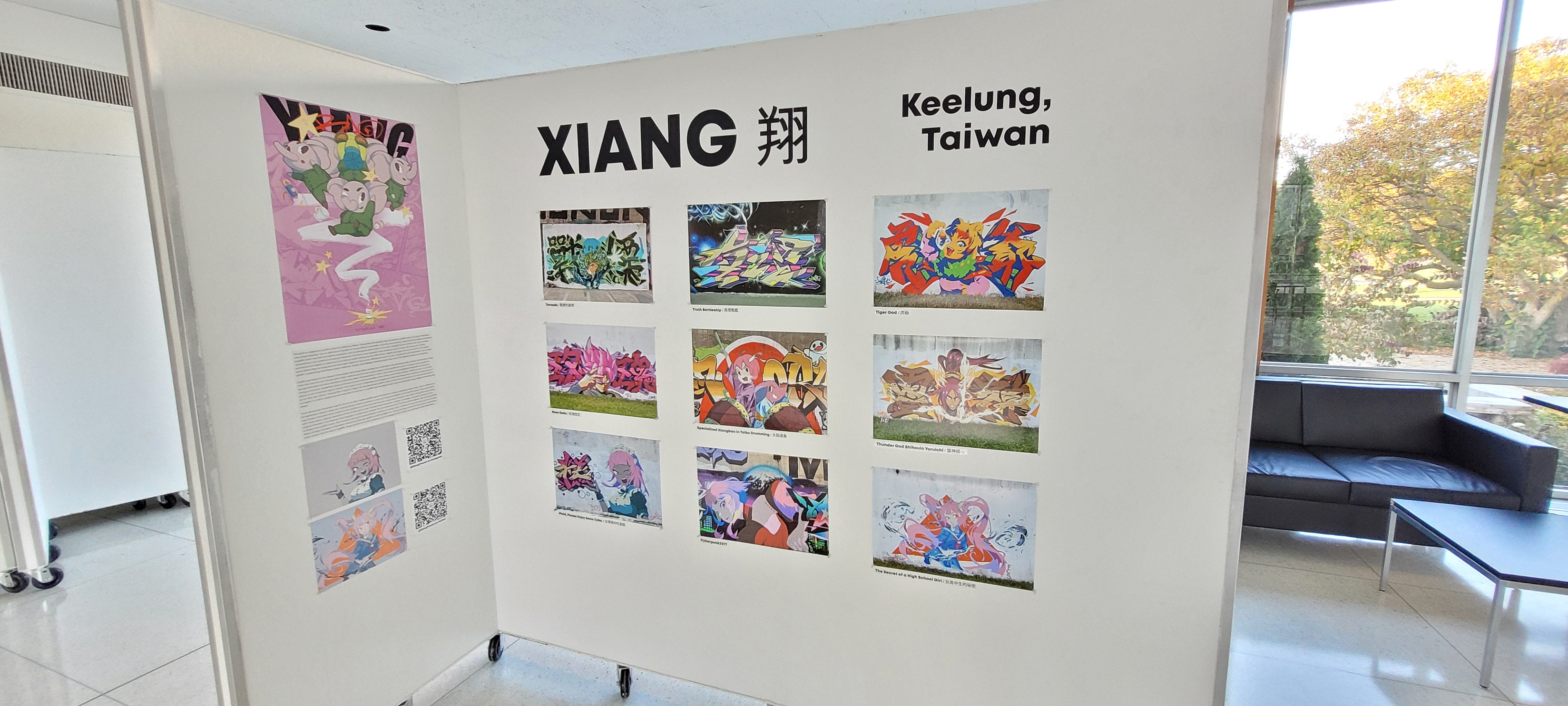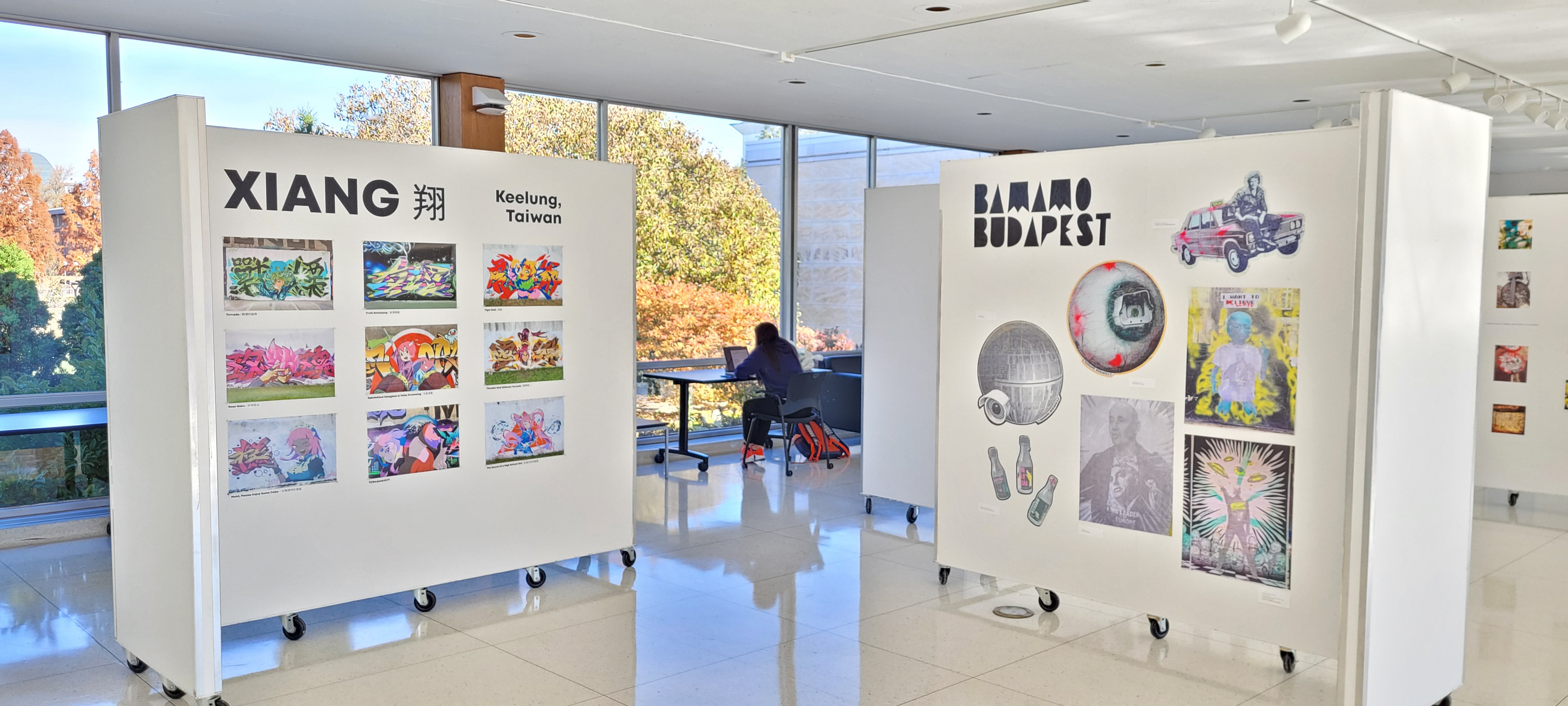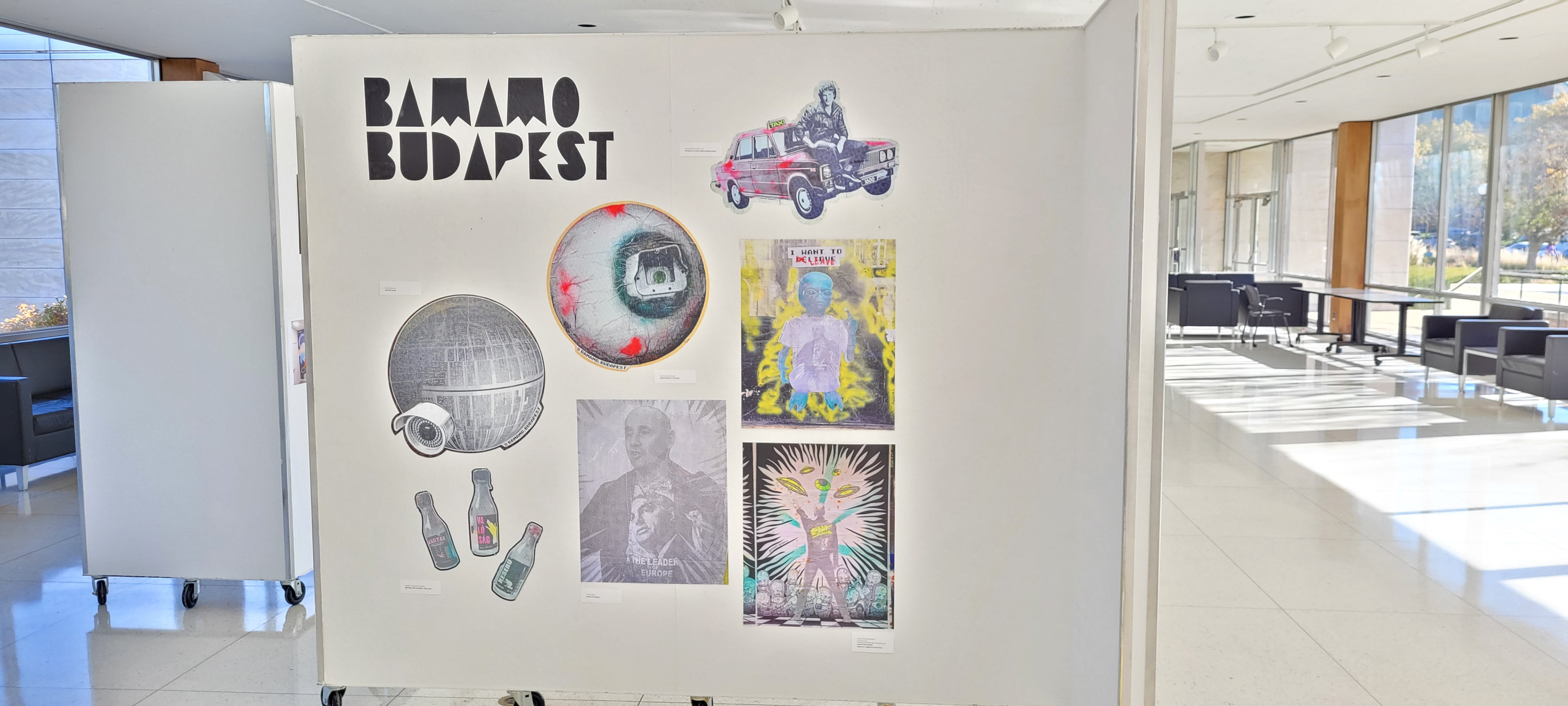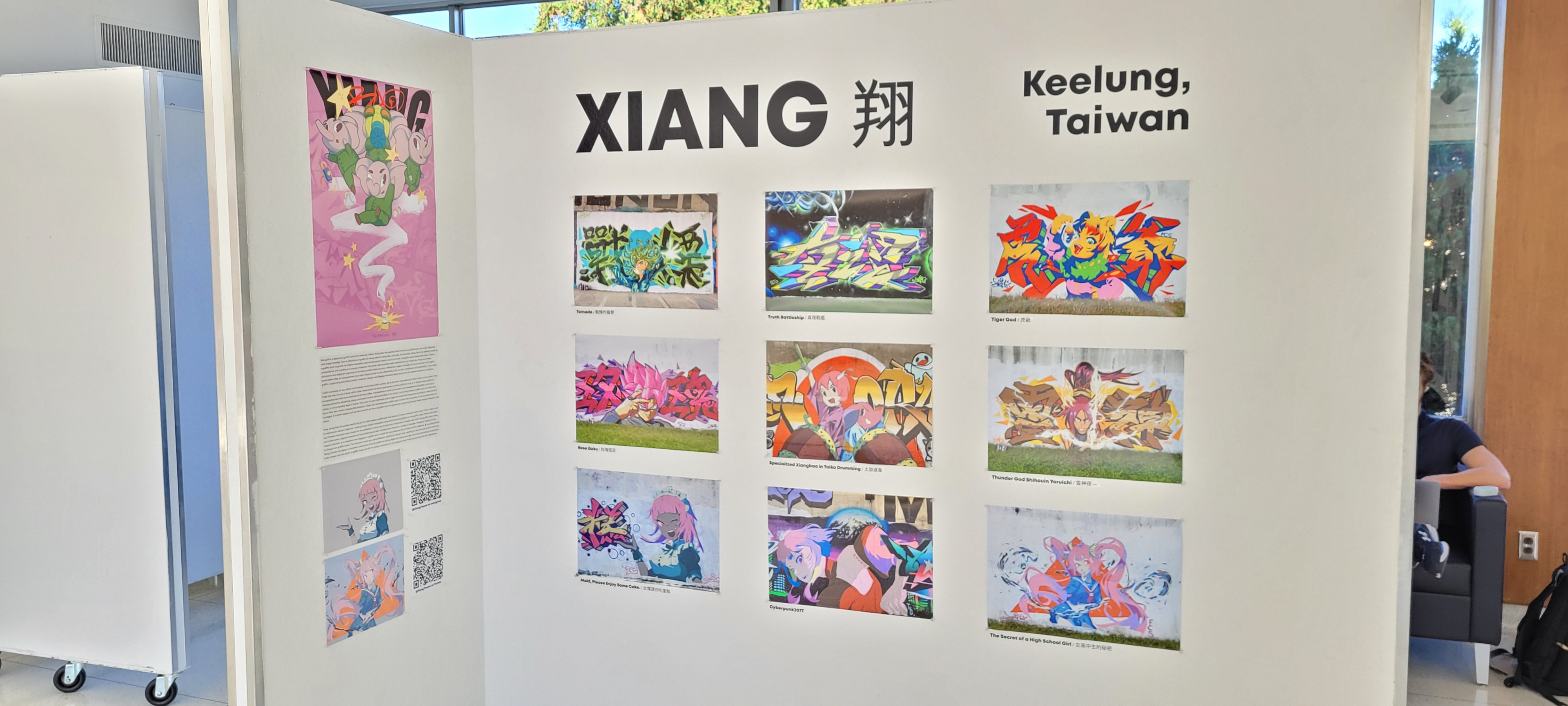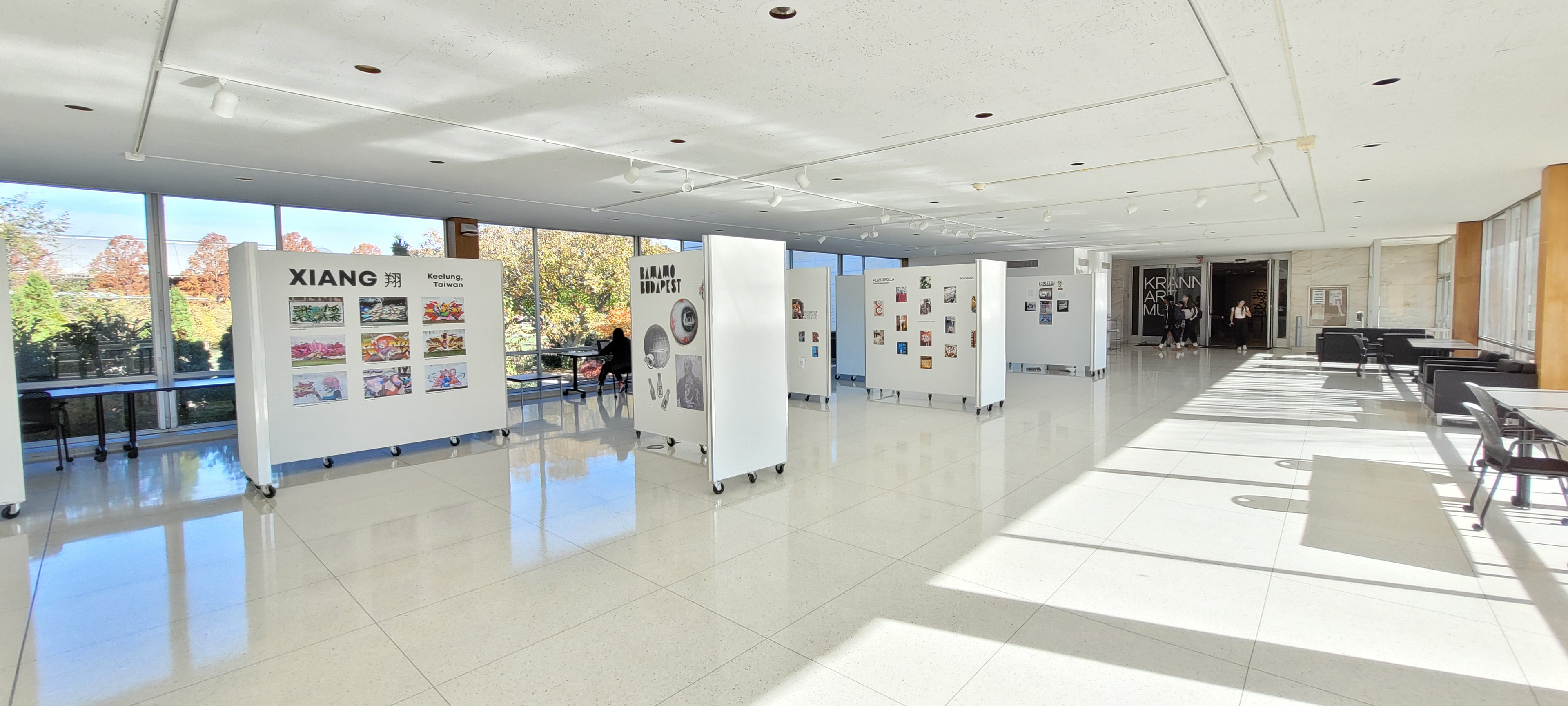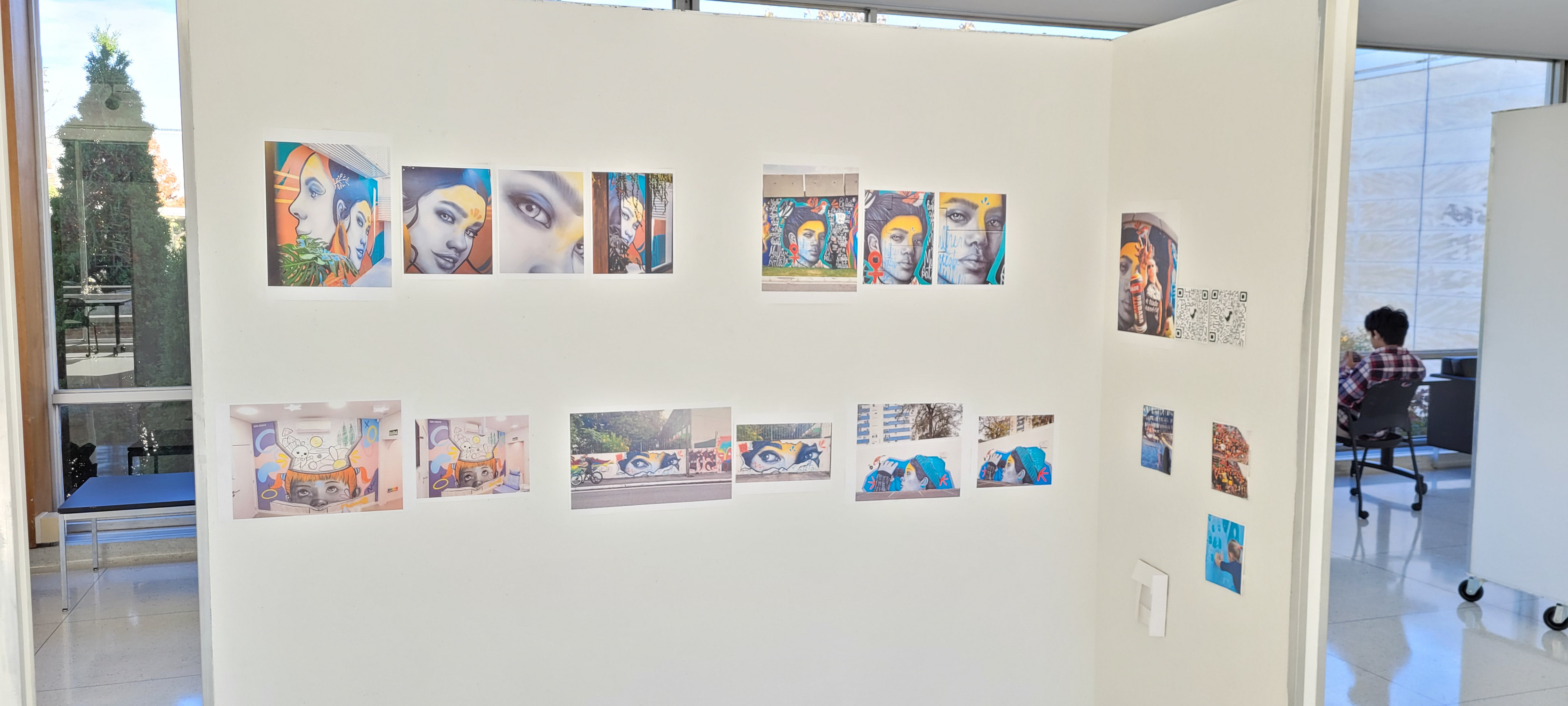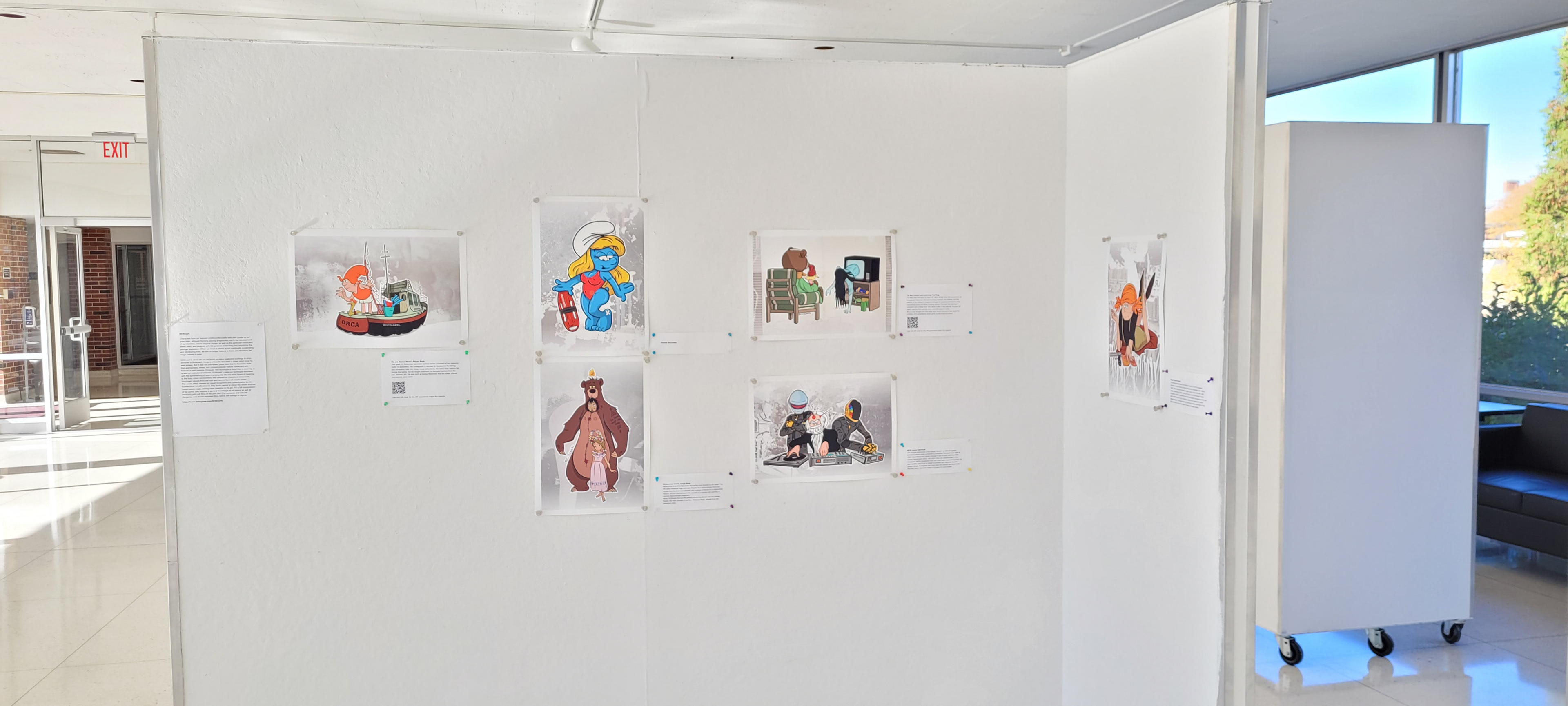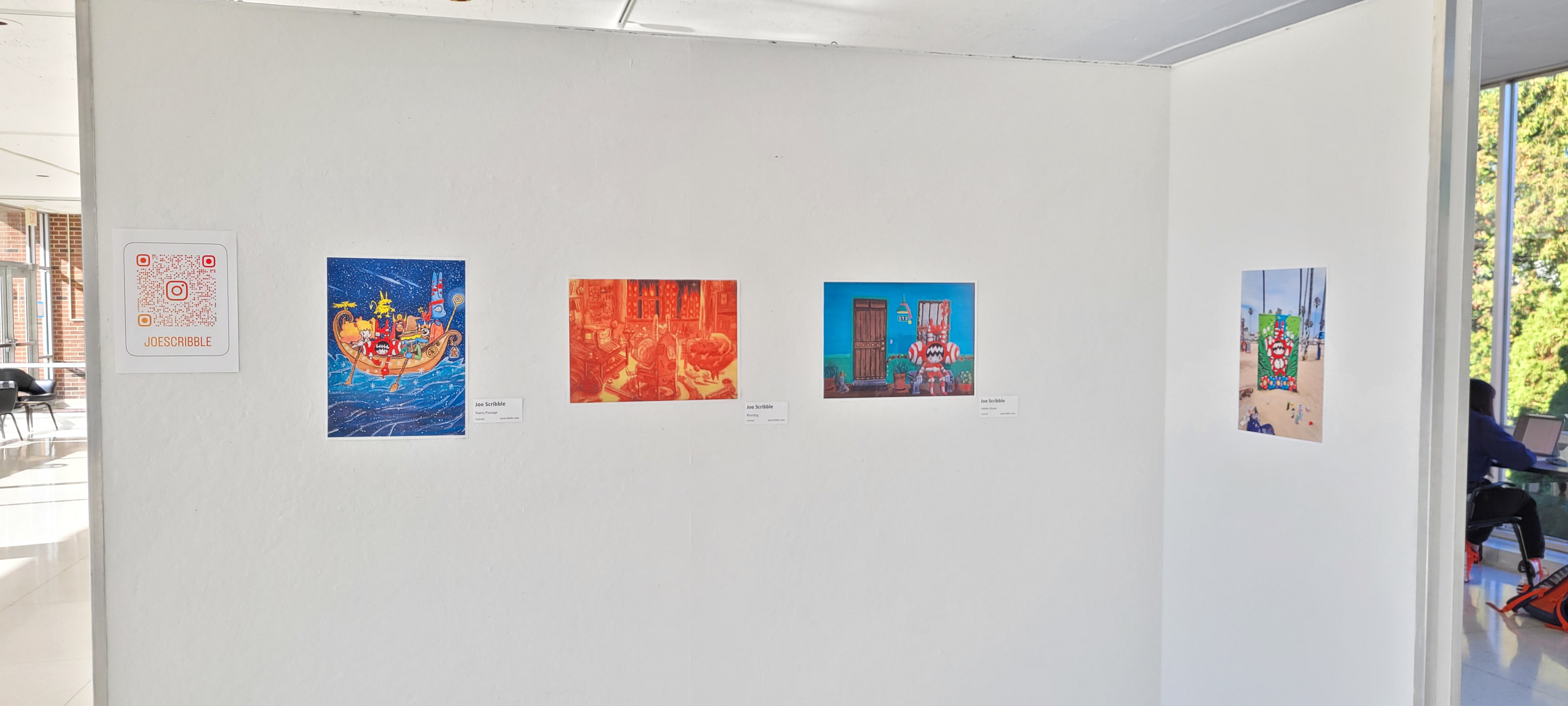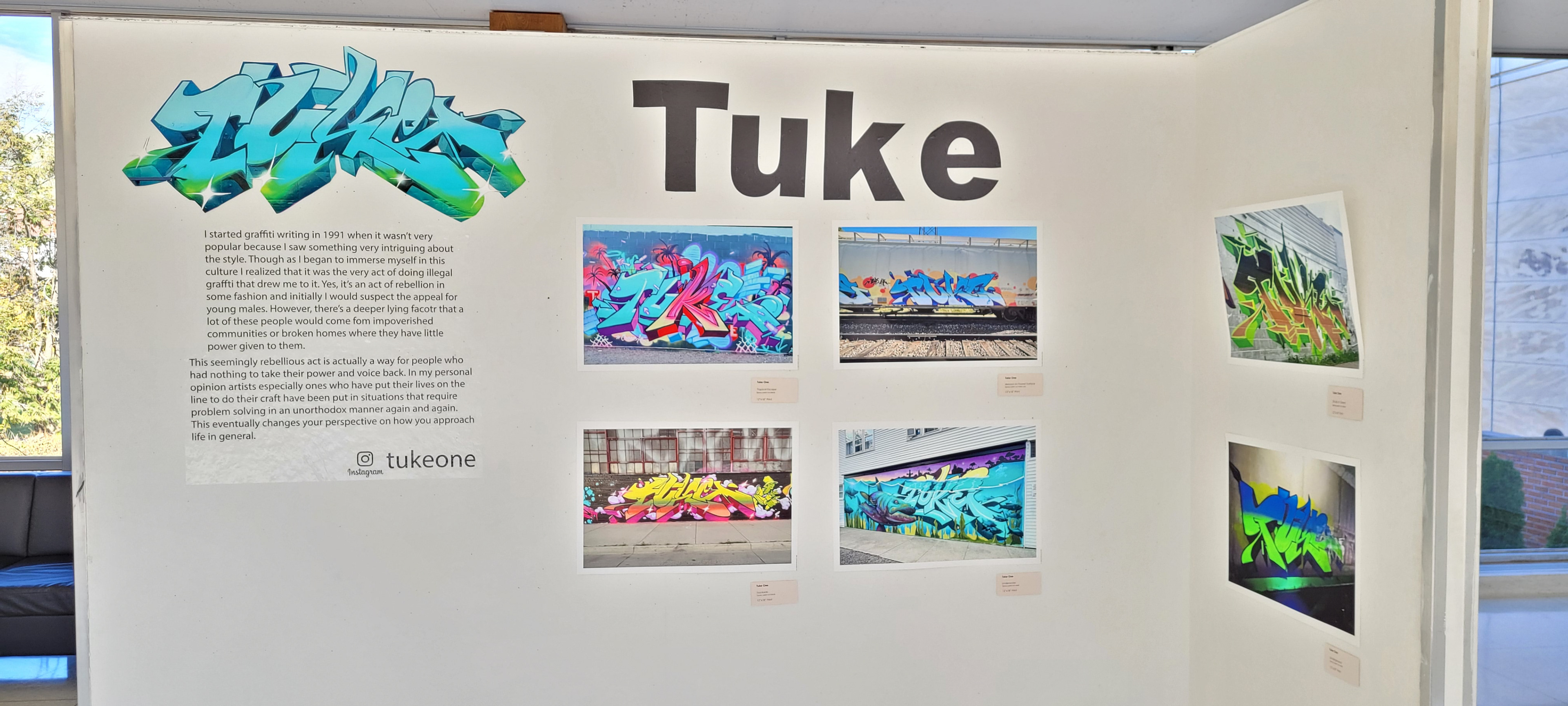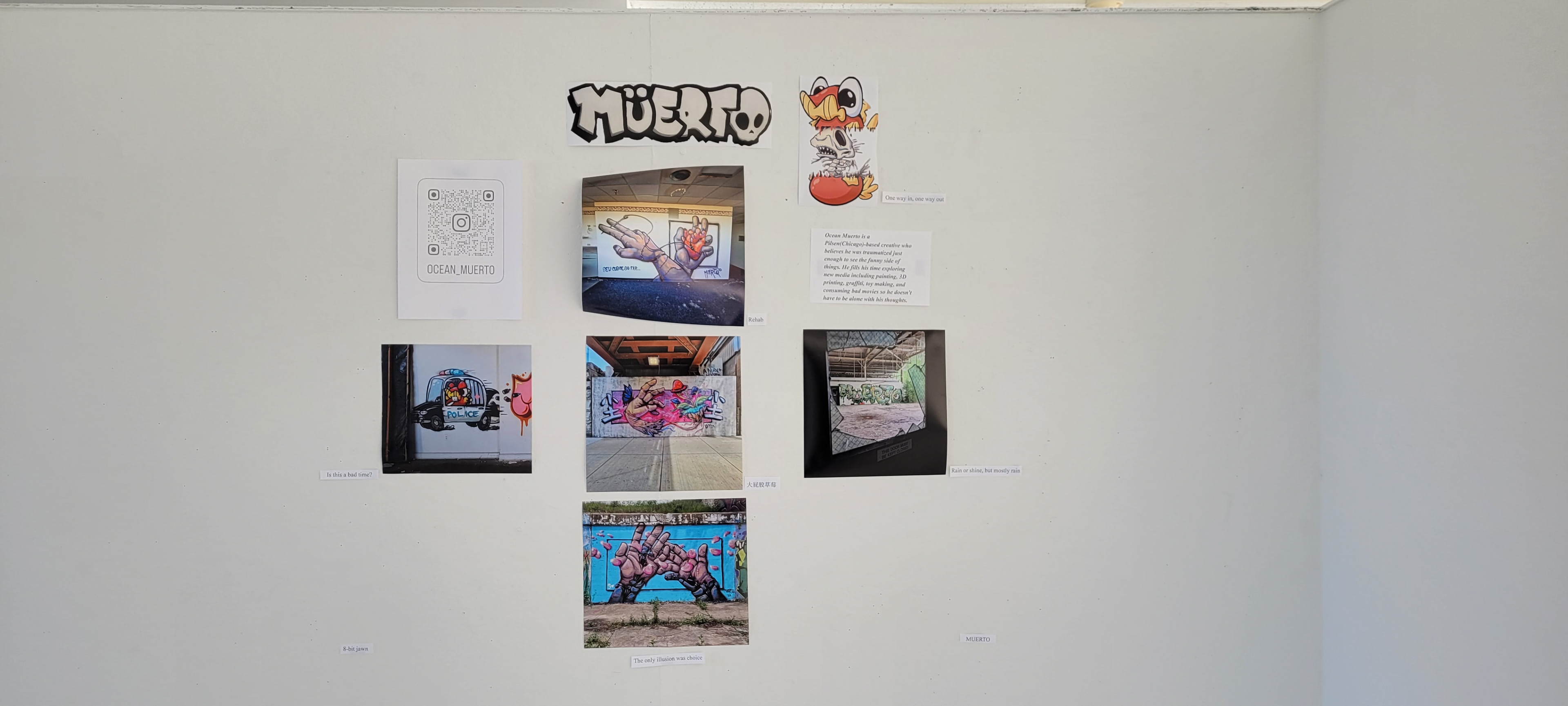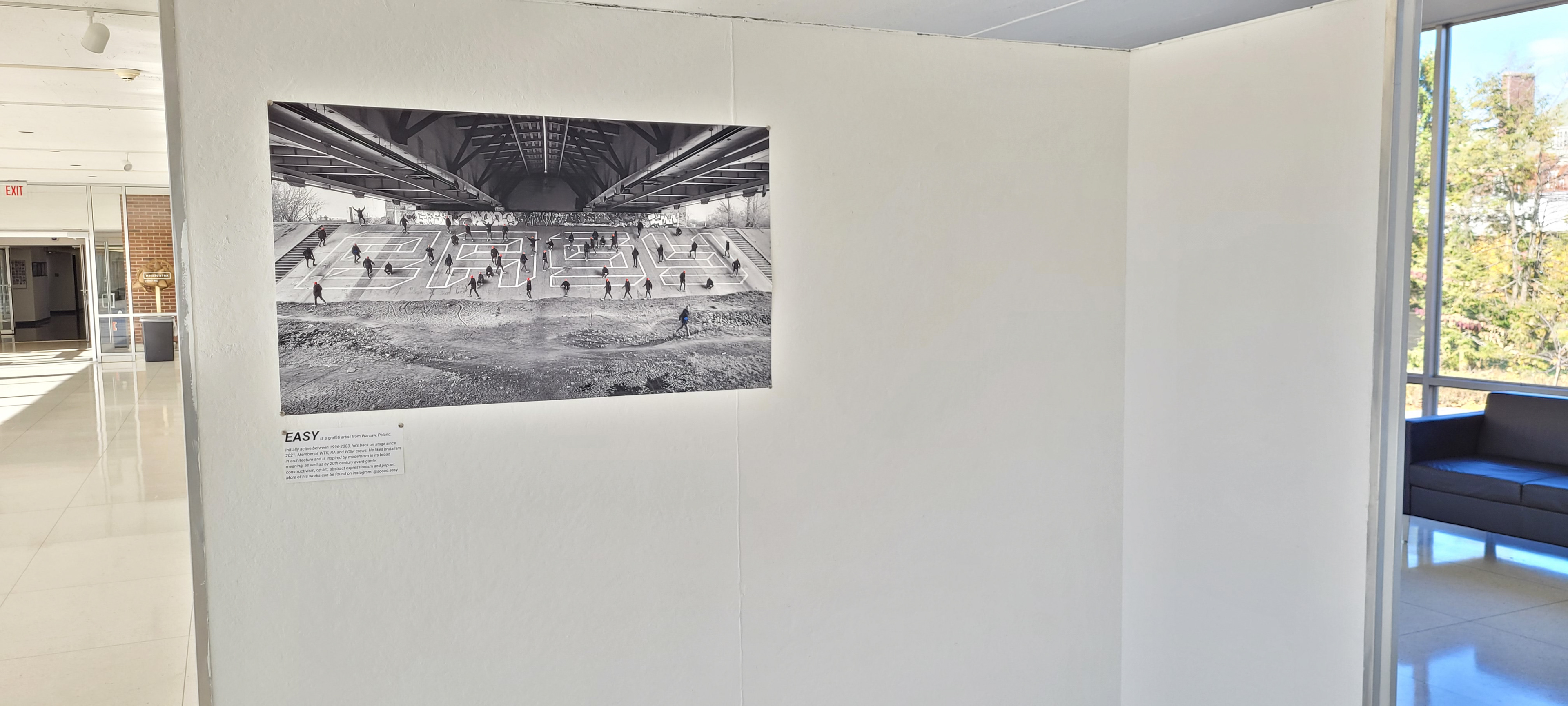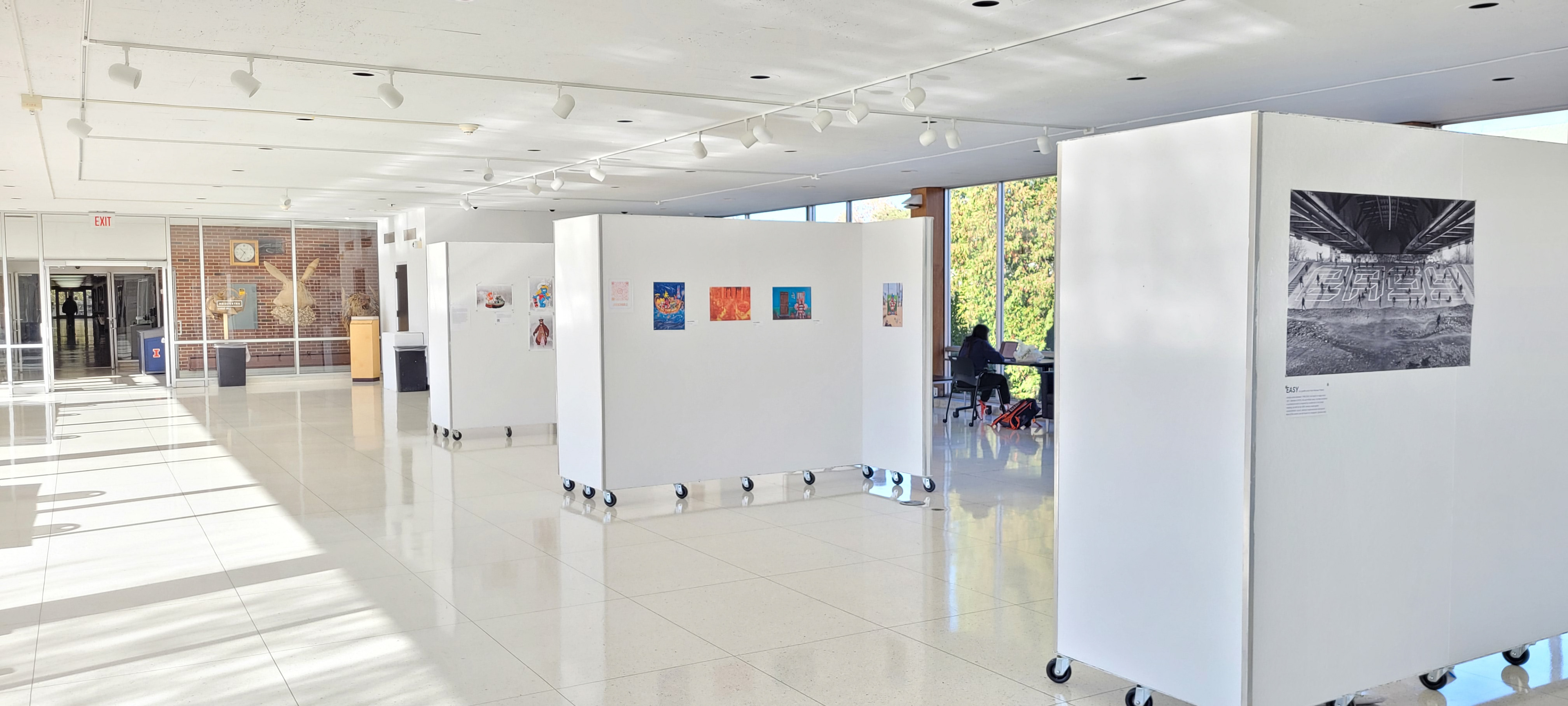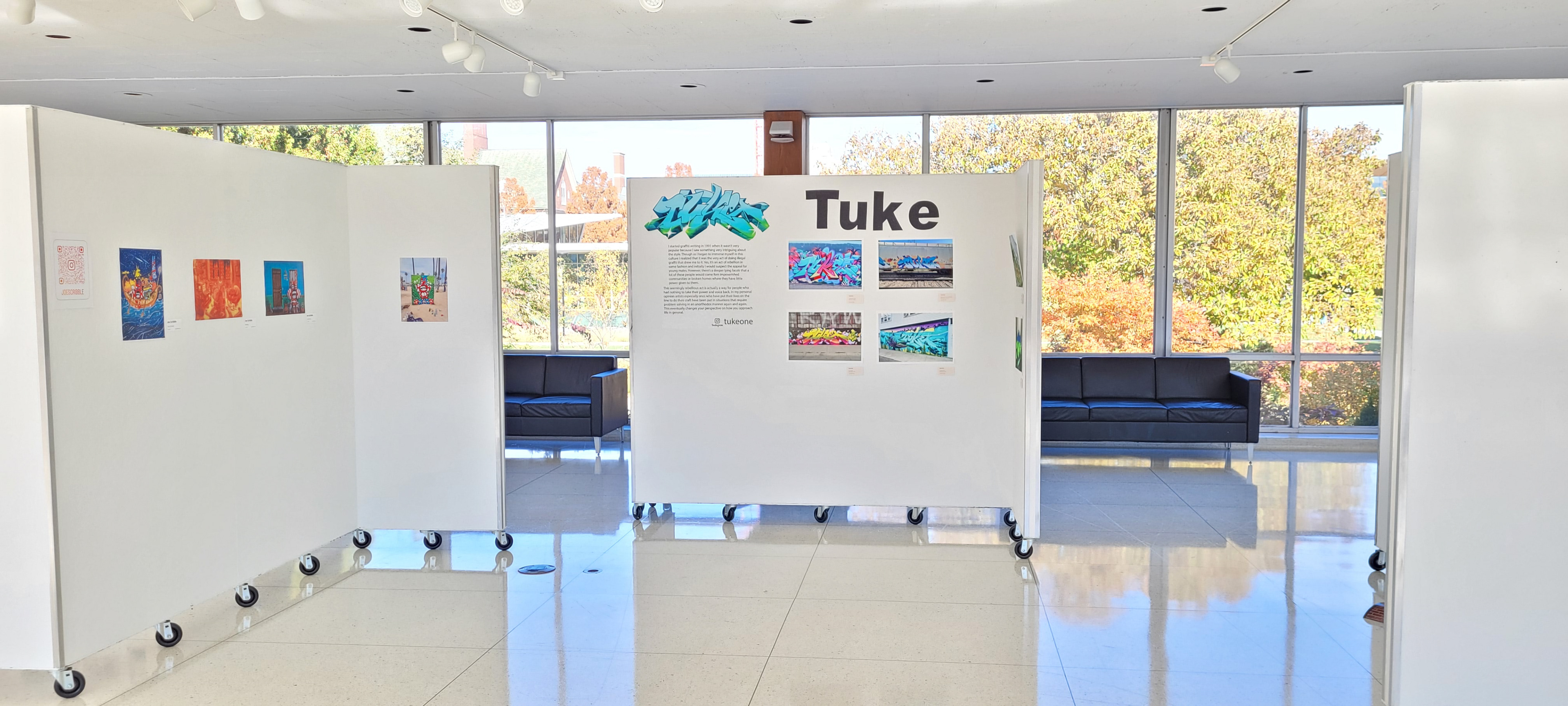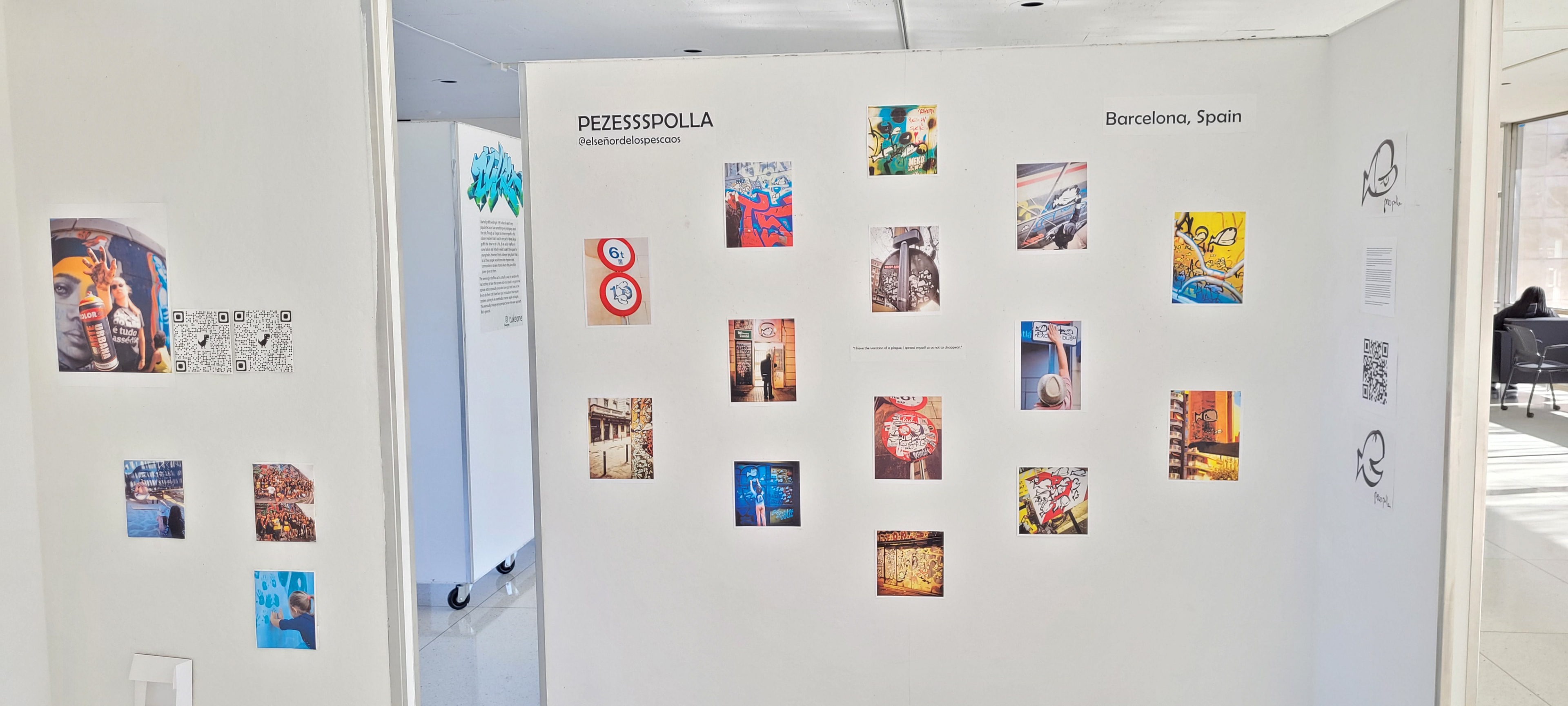ARTE 475: Art Exhibition Practices | Dr. Somi Lee, Professor
Link Gallery of the University of Illinois Urbana-Champaign School of Art and Design
November 6th to 15th
In a collaboration involving 12 graffiti artists from diverse global locations and 12 student curators from ARTE 475, this exhibition presented "Restorying Street Art: From Outdoor to Indoor." This immersive exhibition represents a boundary-breaking experience as it transports the dynamic essence of street art from the open urban environment into the confines of an indoor space. Each artist communicates their distinct narrative through a multifaceted medium, encompassing posters, videos, and virtual realities. This event provides a rare and unparalleled opportunity to witness the collective voice of street art at Link Gallery.
Pezessspolla’s works are not that of a designer or artist; he has no work to his name. He has no goals to capture life, emotion, or process in his designs; he stands against his work in museums in galleries. Instead, Pezessspolla finds himself as one with the city, and a steward of the restiveness that is synonymous with the urban environment.
Finding inspiration in the inconstancy of life, Pezessspolla first discovered the fish in its simplest form, drawing and illustrating in his college notebooks. Taking to the street in a larger form of expression, he began his implementation with markers. Small tags of his famed fish soon grew into larger streetscapes and wall art.
The satisfaction of his own work caused Pezessspolla to become addicted to the thrilling nature of graffiti and street arts, expressing himself on street signs, building facades, and utility boxes until he was caught by the metropolitan police. After administrative proceedings, this event proved to be only a small impetus in his greater practice. Adapting to the new potential of increased policing, a new technique emerged: handmade stickers. Pezessspolla’s stickers are a different approach to traditional graffiti and provide more flexibility, coverage, and reliability.
The appearance of the individual fish in Pezessspolla’s works represent the unpredictability of public spaces and cities. Individuals will laugh at the fish, be surprised, and in some cases, angry. Pezessspolla wants people to feel all of these emotions in his work, and for people to immerse themselves in the randomness of the city. In achieving his goals, his work is strategic: although many of the city’s resources like phone booths and electrical boxes might be accessed by only a few, they have immense potential to attract the passerby and create conversation about life in the city.
In this exhibit, you will see a variety of Pezessspolla’s presentation methods displayed from spray paint to stickers, and the various locations in which he works.
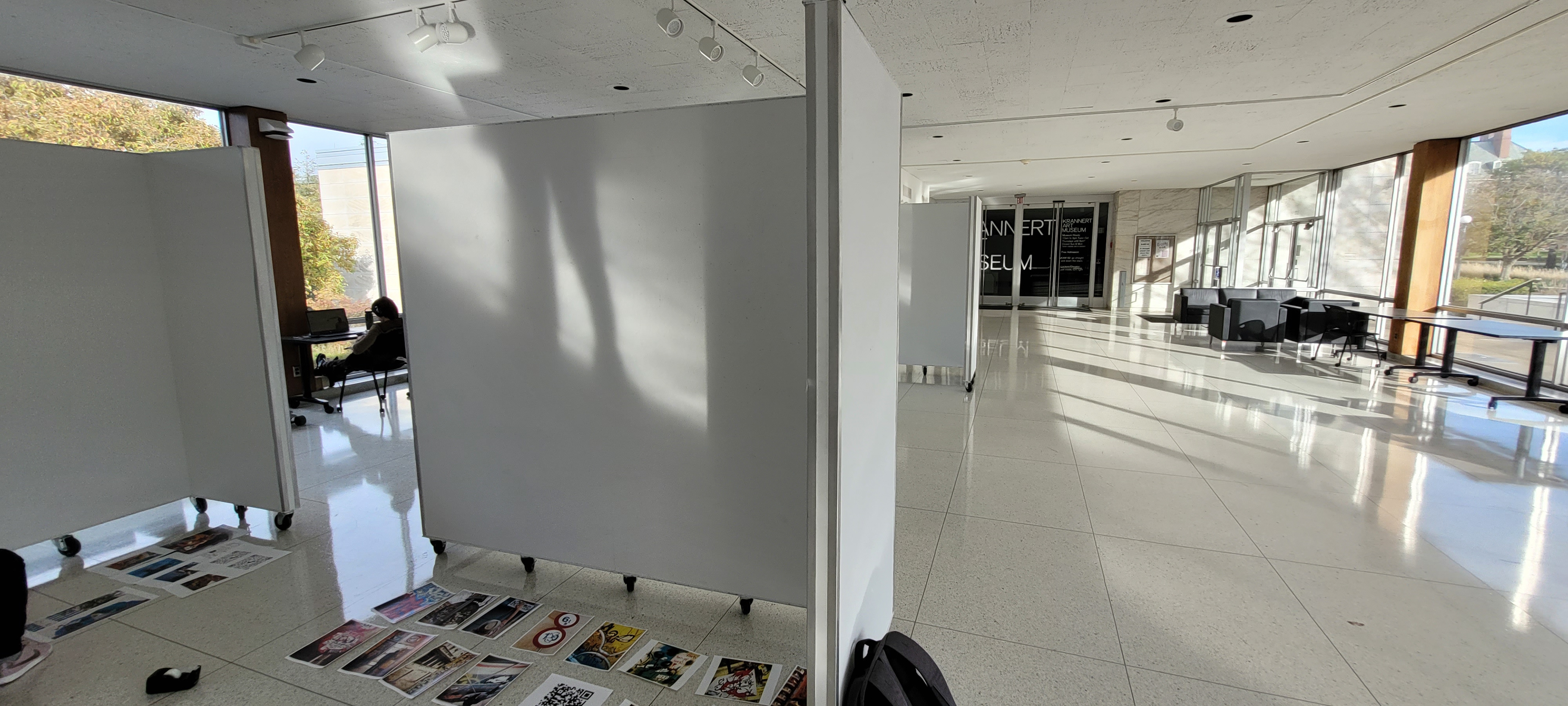
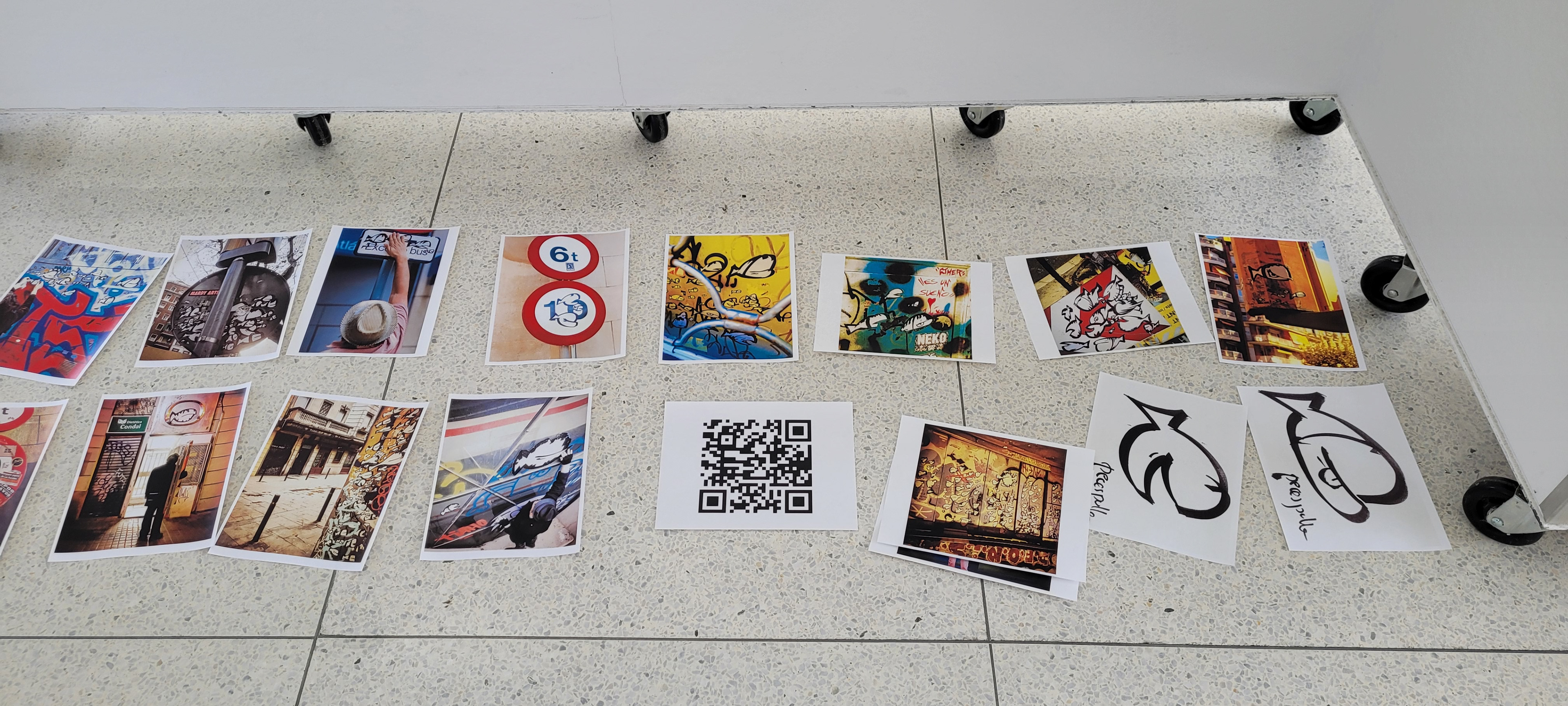
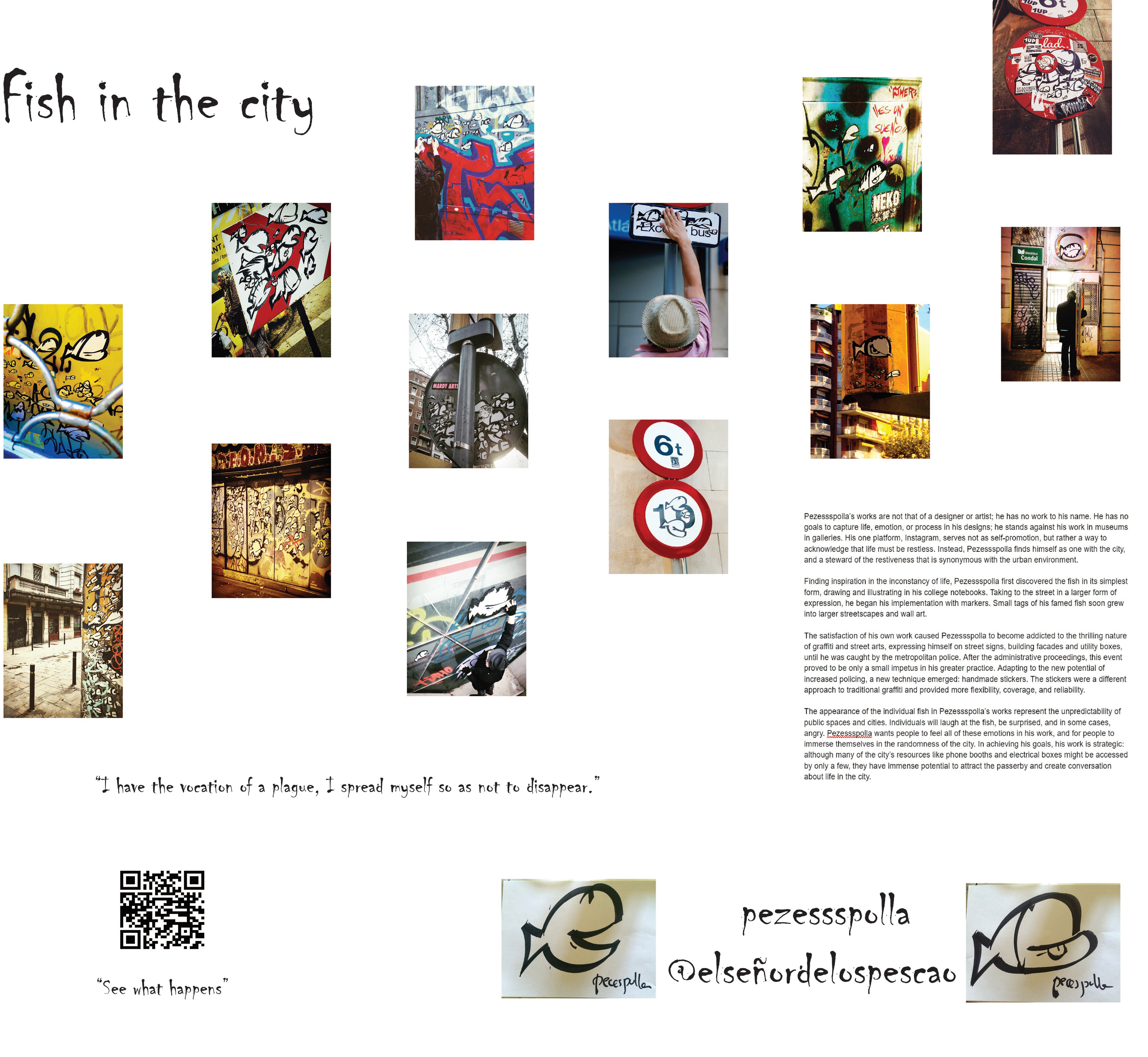
The individual curatorial approach in this exhibition was capturing graffiti in practice, in its environment. Graffiti on gallery walls and in museums tells us nothing about the person who has created it - their ambitions, ideas, backgrounds, and passions; the space in which it exists - who sees it, how it makes people feel, the color it adds to the space, and its overall environment. It was necessary to give context and properly represent the art. With this clear idea about where the art samples must come from, images were selected from the collection that captured the essence of Pezessspolla's work, ranging from simple stickers all the way to entire walls covered in art. With particular attention, images were added in which individuals were shown interacting and adding to the art.
Another goal in the individual curation process was highlighting the randomness and restlessness of the city. The artist had described this as being essential to his work, and by including pictures of his work on street signs and other everyday objects, it was possible to replicate the view of what a passerby would see on the streets of Barcelona.
In the design of the exhibition partition, the goals were to keep a disjointed, yet cohesive installation effort. Although the images are not aligned in perfect rows and columns, they are still organized in such a way to suggest that the art is coordinated for a specific purpose on the street. On the side partition panel, two fish illustrations were selected to highlight the designs in their simplest form to provide an informational wall with a curatorial statement that both added to the visitors’ knowledge and did not detract from the visual aesthetic of the exhibit.
Many times the work that Pezessspolla and other similar artists create is more powerful and meaningful to the people who see their art on the street: walking to work, to school, to church, or to a restaurant. Every person will see the message and see what place it has in their journey. The unpredictability of life in the city is unmatched and his work provides a meaningful insight into the importance of considering how a city’s character is just as important as its contents. This cannot be achieved with art in a museum or gallery alone.
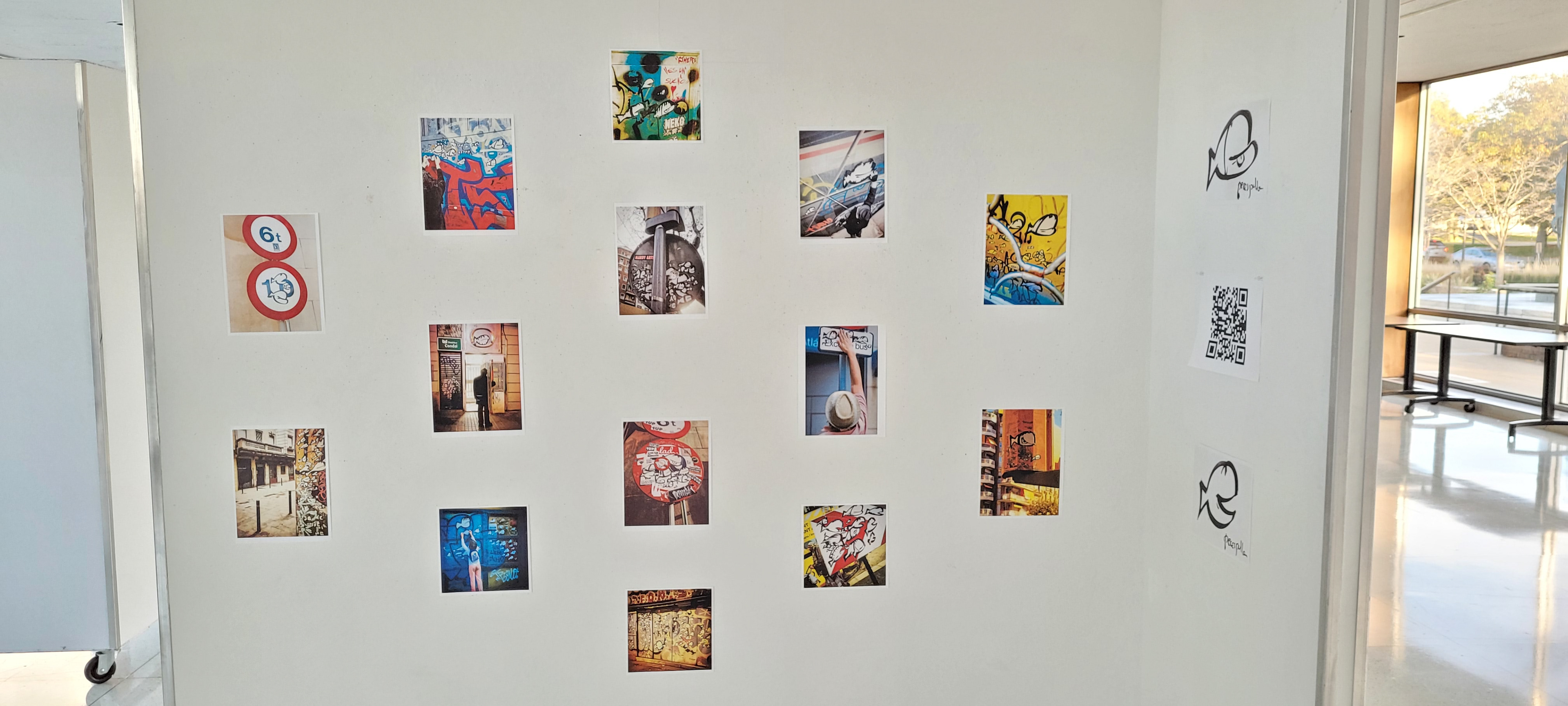
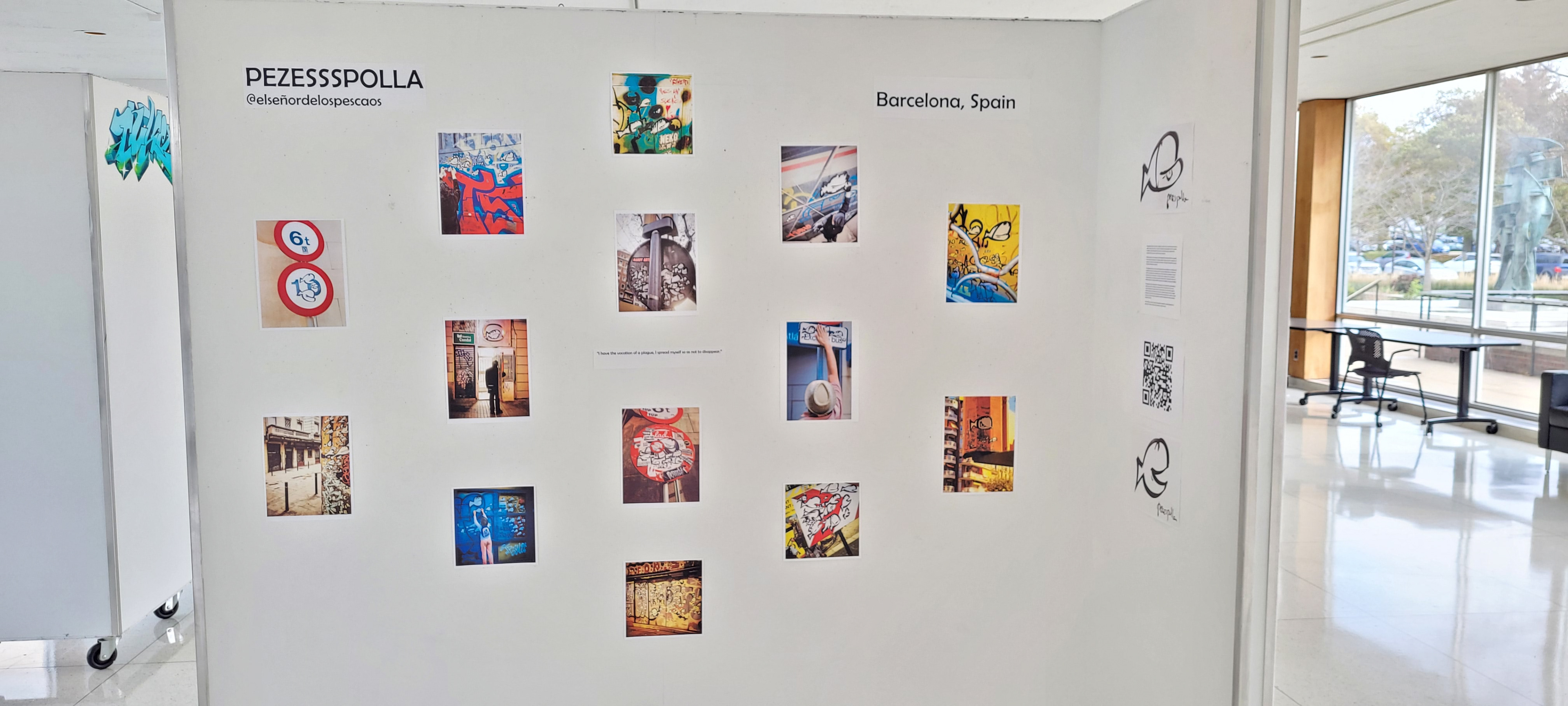
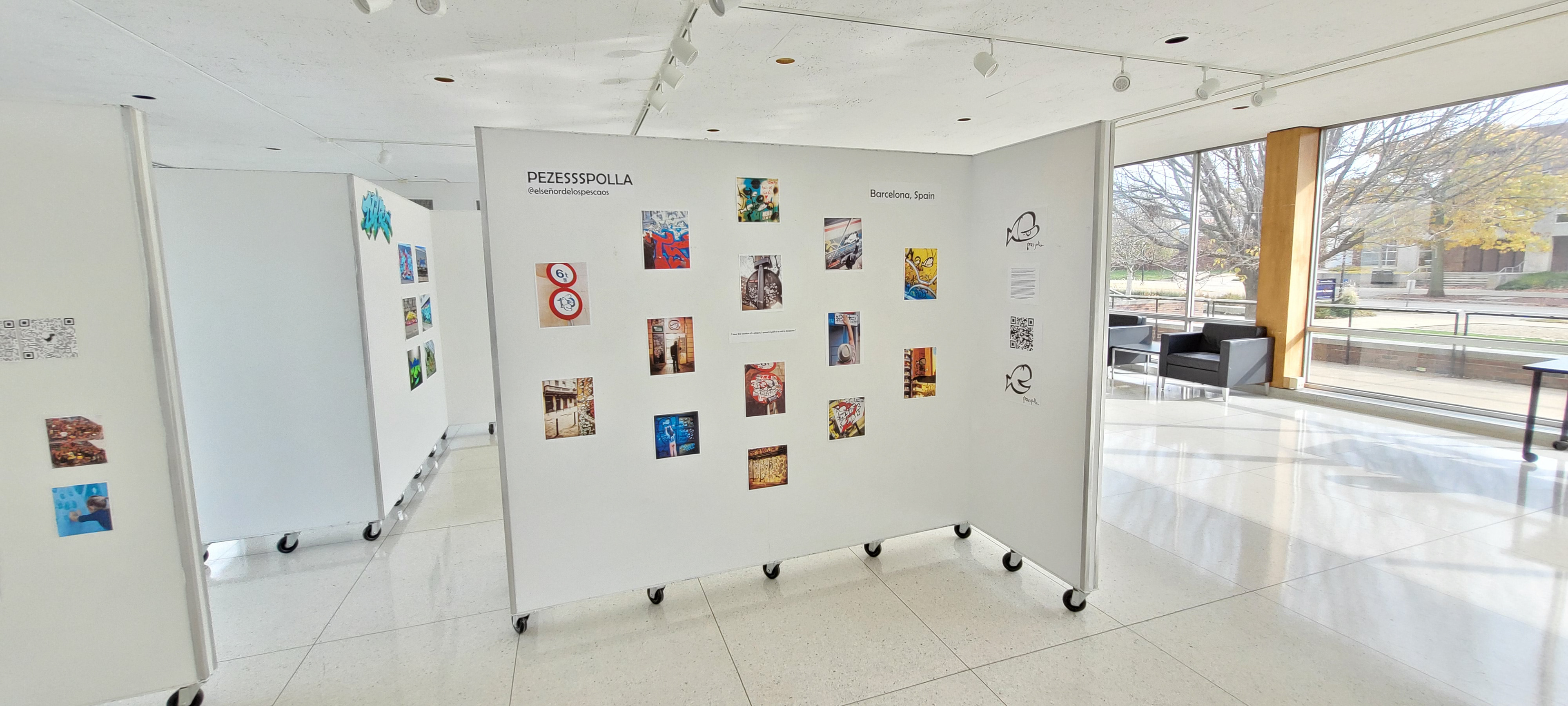
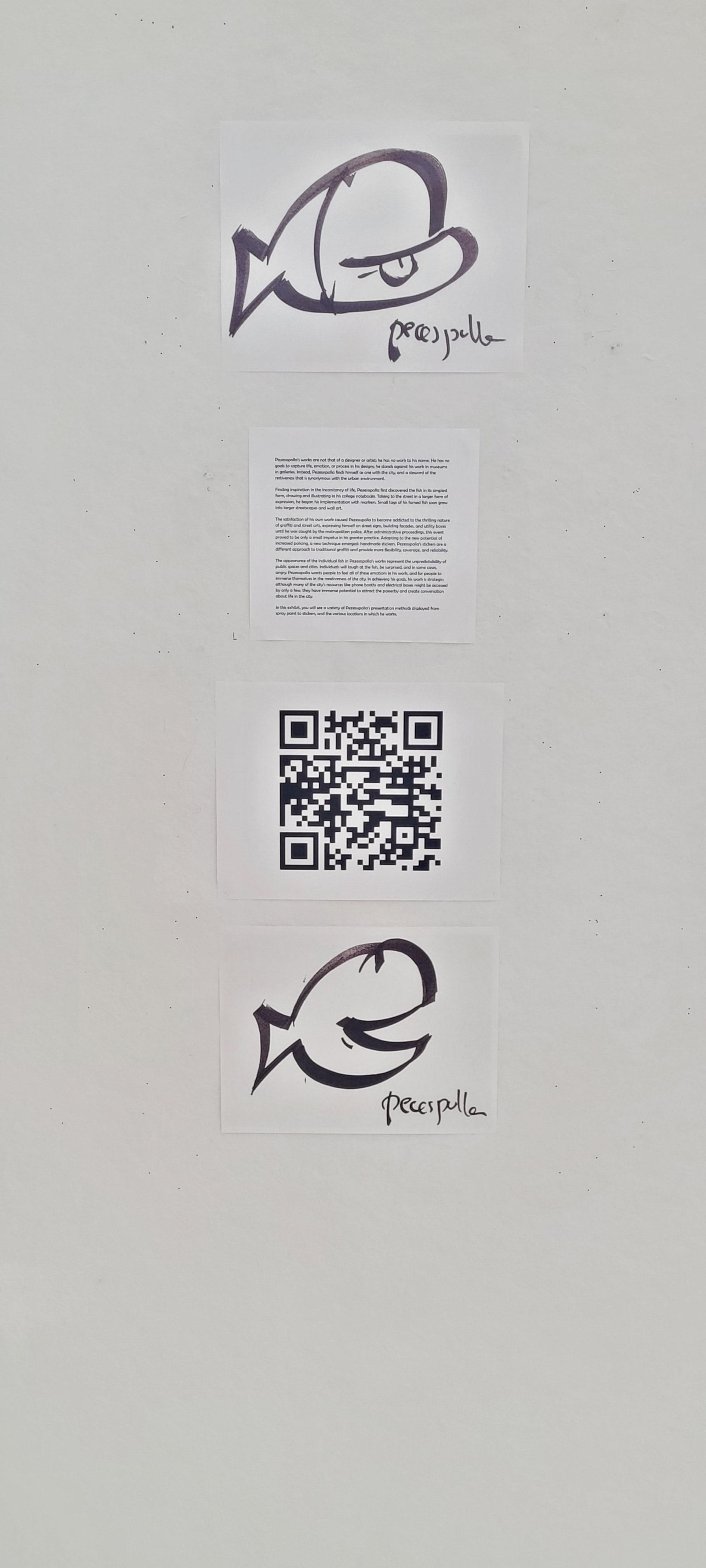
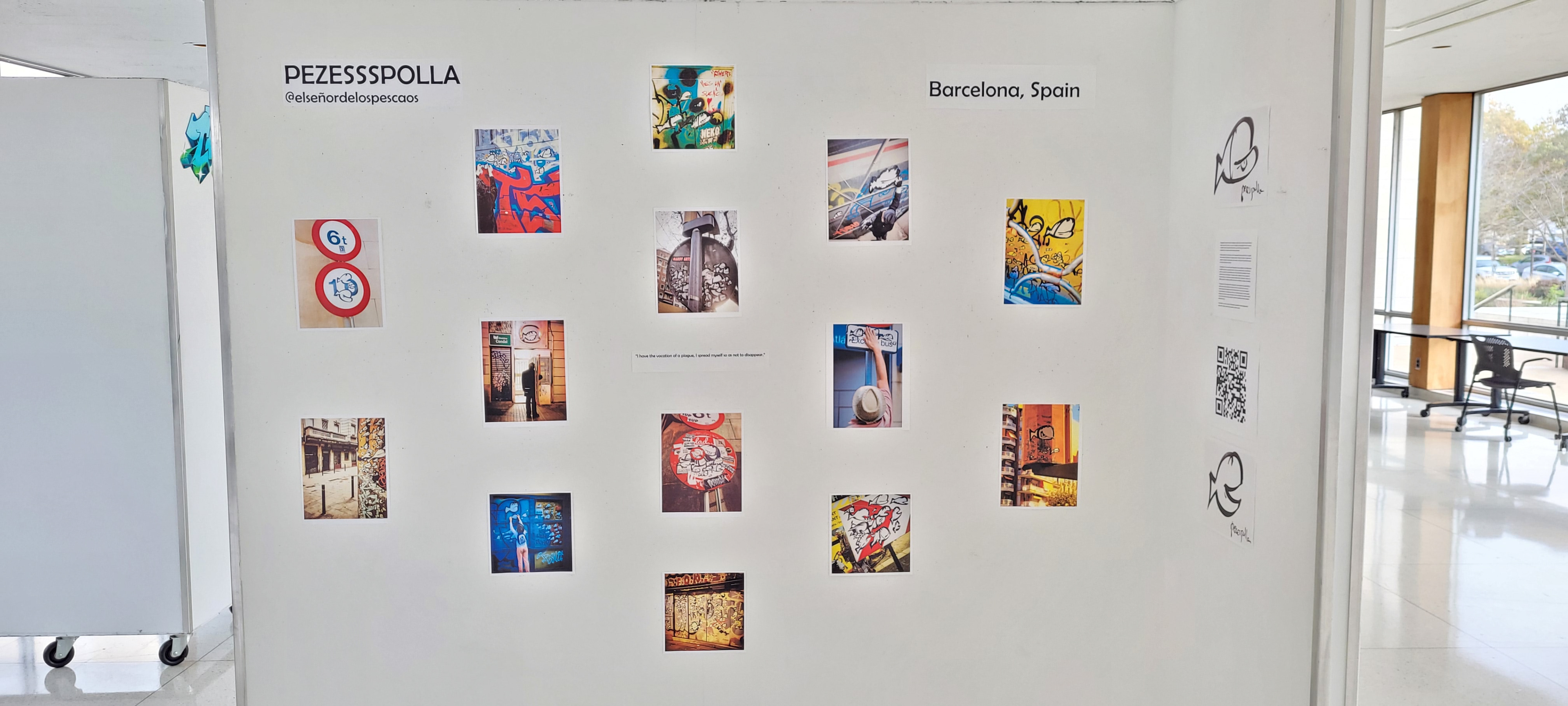
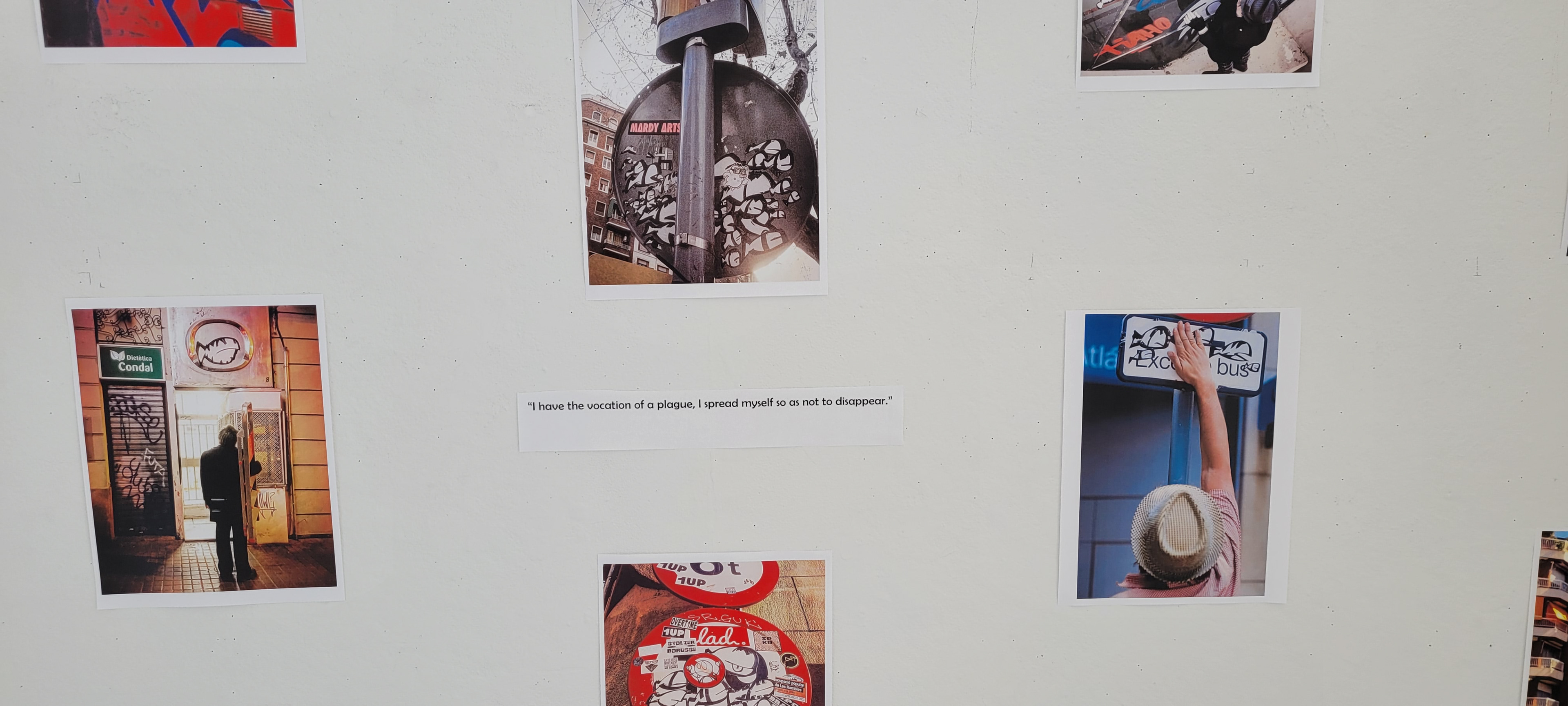
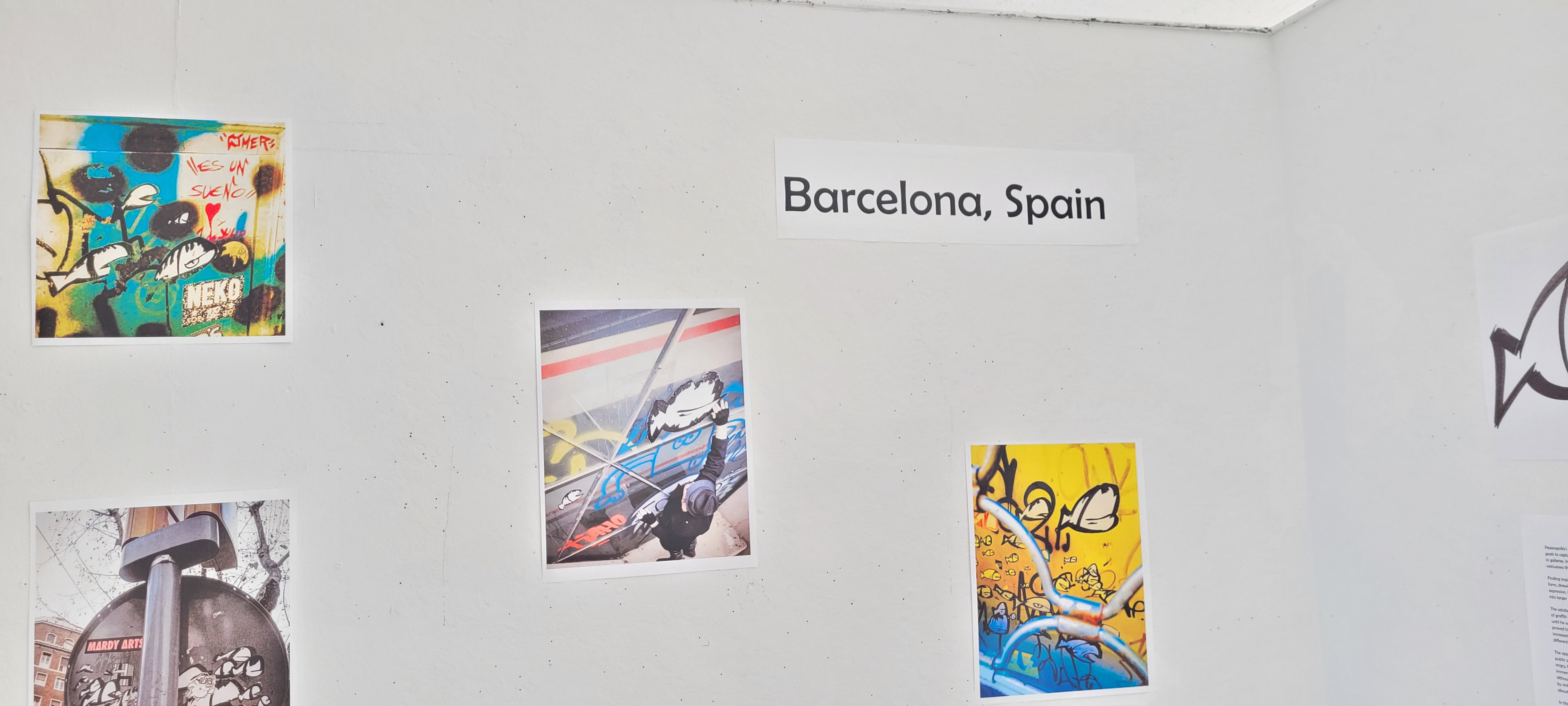
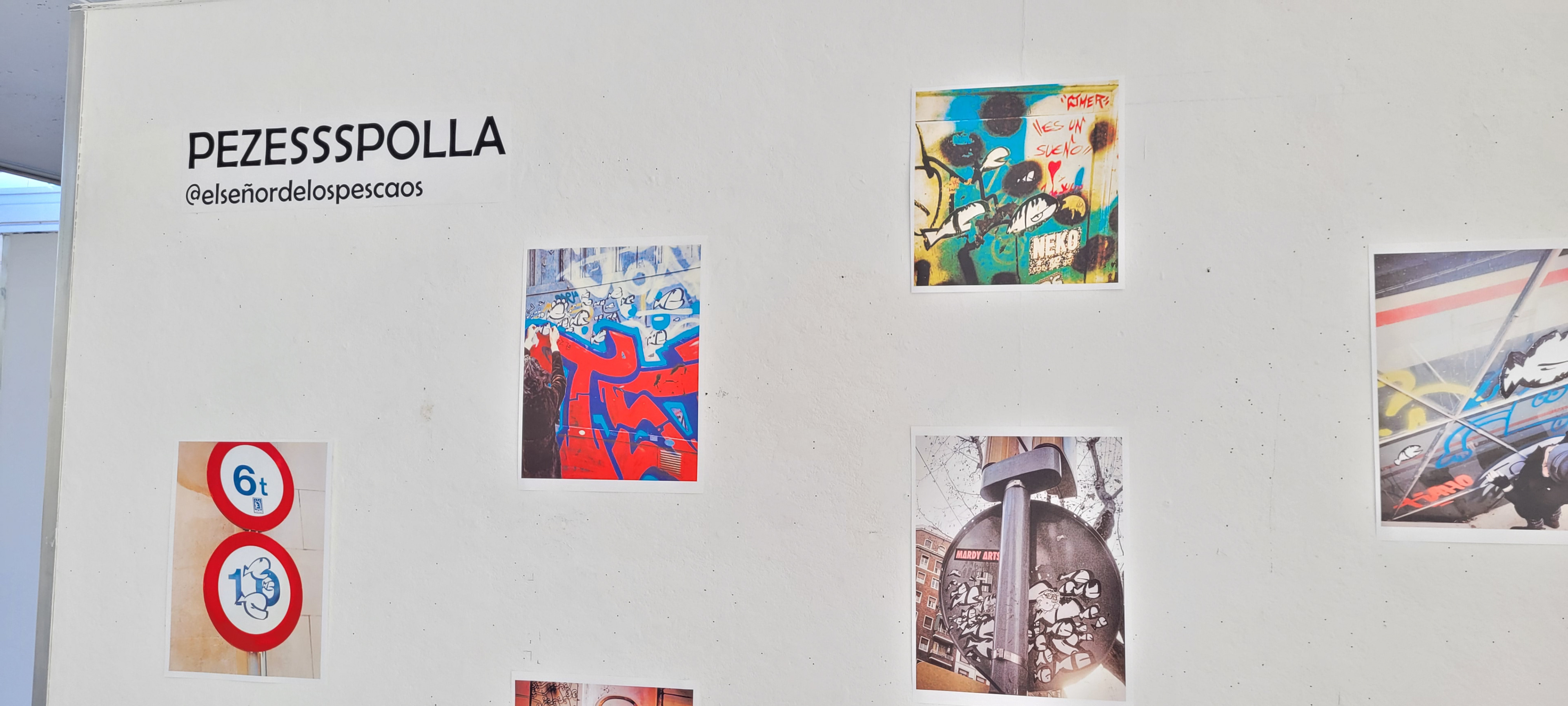
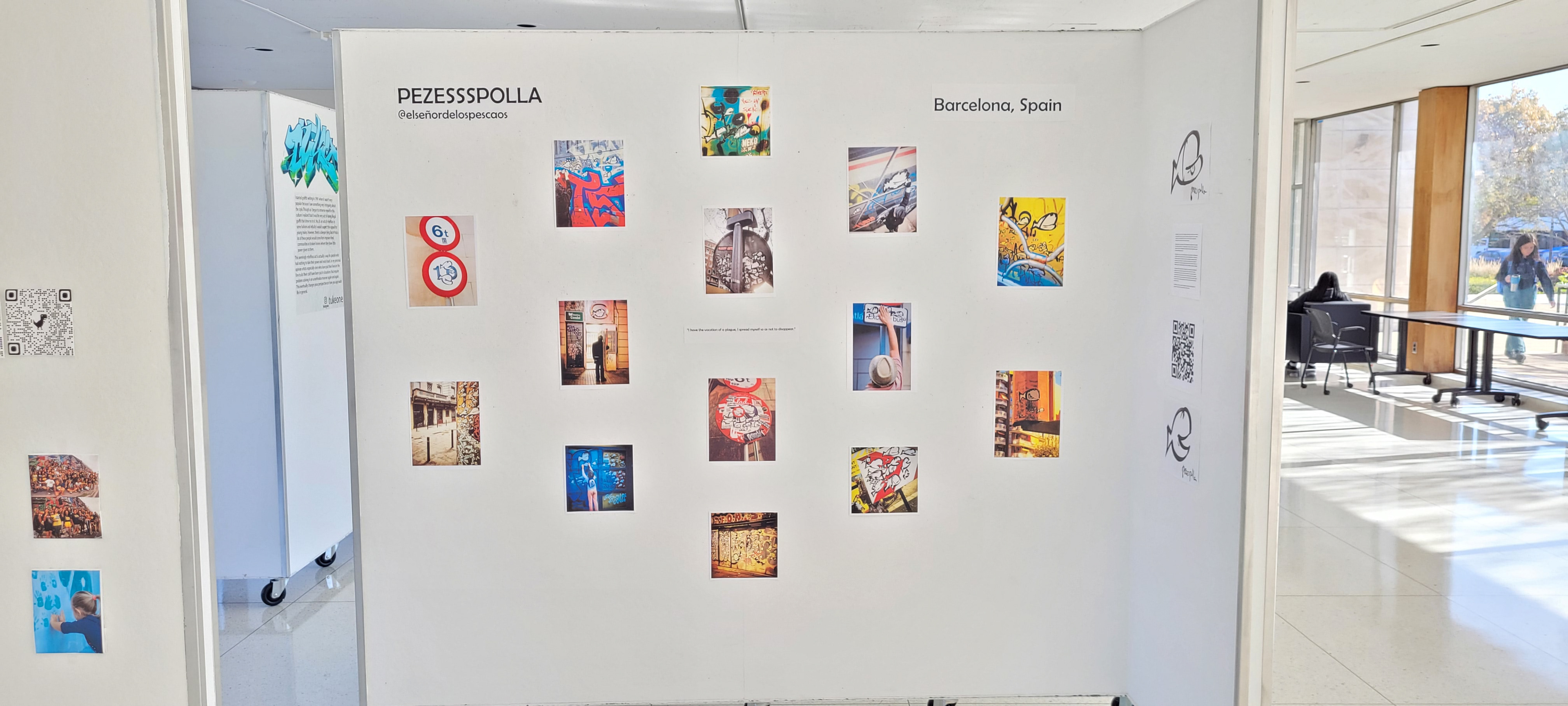
Although all handling different themes and working with different artists, curators worked together to understand the common underlying themes and design aesthetics of each partition exhibit.
